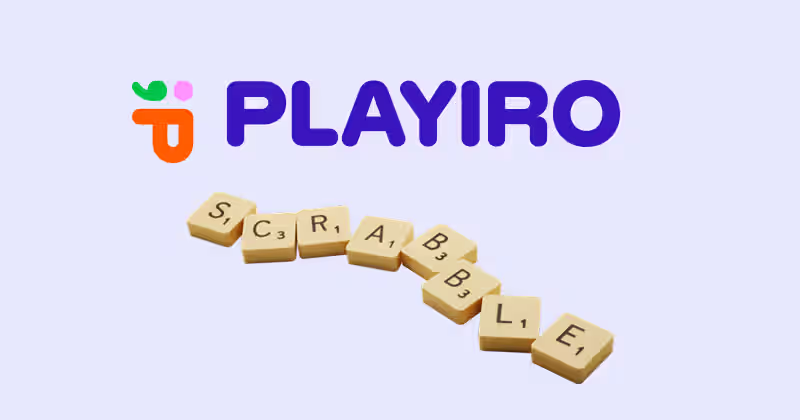
Scrabble Rules
Scrabble is a timeless word game that challenges players to build words using letter tiles on a 15x15 grid board. Whether you’re a wordsmith or a casual player, Scrabble is fun, competitive, and intellectually stimulating. Players aim to outscore each other by placing high-value letters strategically, using bonus squares, and blocking opponents.
Created By Adam Davis Fernsby
How to Play the Scrabble Board Game
Get started with our complete Scrabble game guide for beginners. Learn how to form high-scoring words, use bonus squares wisely, and rack up points to outplay your opponents. Though, the game works perfectly well for players of different experience and skill levels.
Preparations
- Players: 2–4 players
- What You Need: A Scrabble board, 100 letter tiles, 4 tile racks, a tile bag, and a scorepad.
- Setup:
- Place the board in the center.
- Put all letter tiles face down in the bag.
- Each player draws 7 tiles to start.
- Choose who goes first randomly (or by drawing the highest letter).
Gameplay
Each player’s turn consists of the following steps:
1. Build a Word
- Place a valid word on the board using tiles from your rack.
- The first word must cover the center square.
- Every new word must connect to existing ones, like a crossword puzzle.
- Words may be placed horizontally or vertically, but not diagonally.
2. Scoring the Word
- Add the point value of each letter in the word.
- Apply bonus squares if covered:
- Double Letter (DL) / Triple Letter (TL) → Multiplies letter score.
- Double Word (DW) / Triple Word (TW) → Multiplies total word score.
- Bonus squares only apply the first time a tile is placed on them.
3. Refill Your Rack
- After playing a word, draw tiles until you have 7 tiles again.
4. If You Can't Play a Word
- Pass your turn.
- Exchange tiles (losing your turn).
- Challenge a word you believe is invalid.
Winning the Game (Official Endgame Rules)
The game ends when:
- A player uses all their tiles and there are no tiles left to draw.
- All players pass two turns in a row.
Scoring the Endgame
- Subtract the point value of unplayed tiles from each player's score.
- The player who emptied their rack adds those points to their total.
- The player with the highest score wins.
Strategies and Tips
Scrabble isn’t just about knowing long or fancy words. Smart tile management, board awareness, and tactical blocking make the difference between winning and losing.
Basic Strategies
- Use prefixes and suffixes to build longer words (e.g., -ED, RE-, -ING).
- Take advantage of double and triple word score tiles.
- Save high-value letters like Q, Z, and X for premium spots.
- Don’t ignore small words — two- or three-letter words can create big scoring combos.
Advanced Strategies
- Track remaining tiles using a tile-tracking sheet or mentally.
- Build parallel plays — place short words next to existing ones to score twice.
- Hook letters onto existing words (e.g., turning CAT into CATS).
- Control premium squares to prevent opponents from capitalizing on them.
Overview of the Game Rules
| Aspect | Details |
|---|---|
| Objective | Score the most points by forming valid words |
| Word Placement | Words must connect to existing tiles |
| Tile Points | Each letter has a value (e.g., Q=10, E=1) |
| Turns | Play a word → Score → Draw tiles |
| Invalid Words | Can be challenged; removed if invalid |
| Winning | Highest total score wins |
Scrabble Junior Rules
For younger players, Scrabble Junior offers a simplified version:
- The board has two sides: one for beginners (pre-printed words) and one for advanced play.
- Kids match letter tiles to build words.
- Great for ages 5+, no complex scoring required.
- Scrabble Junior Level 2 uses the advanced side where kids start forming their own words with guidance.